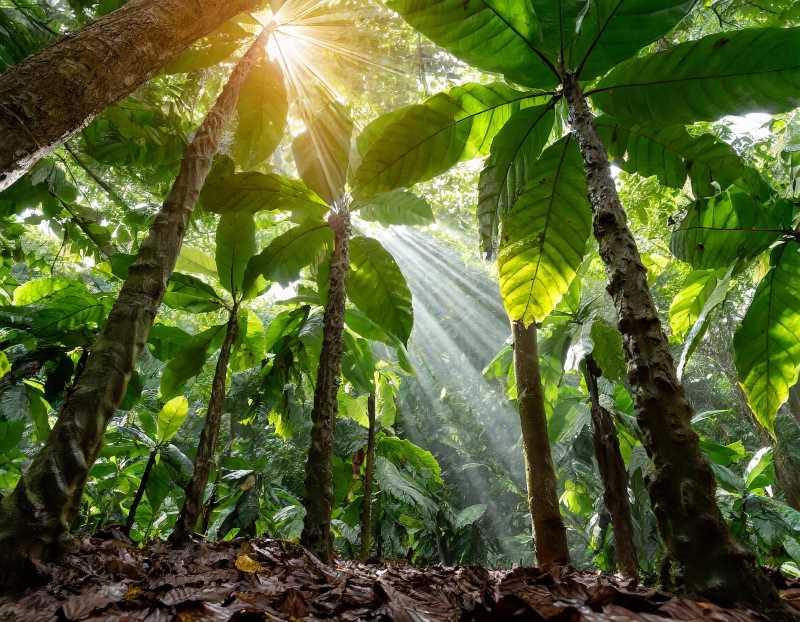How Shade Nurtures the World's Most Beloved Bean
Cocoa thrives in shaded, biodiverse plantations, echoing ancient wisdom. Sun-sheltering trees and dappled light create perfect growing conditions for these “aromatic coins” with a complex flavor. This sustainable method protects the environment and delivers the best chocolate.

There's a certain mystique to chocolate, a luxurious darkness that melts on the tongue and conjures up images of gilded age decadence. But far from the polished marble countertops of high-end chocolatiers, the magic begins in a place most wouldn't expect: the cocoa plantation. Here, beneath a dappled canopy of leaves, unfolds a story as rich and layered as the chocolate itself – a tale of careful cultivation, ancient wisdom, and the delicate interplay between sun and shade.
Imagine an agroforestry system, a complex web tied together with productive diversity. Tall trees, the age-old guardians, stand sentinel, their leaves forming a protective filter. Sunlight, no longer a harsh glare, becomes a harmonious arrangement of dappled rays. This is the world of the cocoa plantation, not row upon row of identical trees, but a living ecosystem teeming with life. Data tells us that these mixed-canopy systems boast a higher yield and superior bean quality, but the true magic lies deeper.




